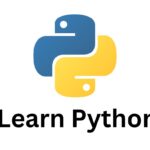Navigating Global Markets: A Guide to Intermarket Analysis and Profitable Strategies
In the ever-evolving world of finance, staying ahead of the game and making informed investment decisions is a paramount goal for every trader and investor. One tool that has consistently…
Understanding the Different Types of Gaussian Mixture Models (GMMs)
What is Gaussian distribution first? A Gaussian distribution, also known as a normal distribution, is a probability distribution that is symmetrical around its mean and has a bell-shaped curve. Gaussian…
Mastering the Art of Model Training: The Significance of Epochs in Machine Learning Success
In the world of machine learning, where algorithms make sense of vast amounts of data to predict outcomes or recognize patterns, the journey from raw data to a powerful model…
Exploring Business Models: A Roadmap to Successful Businesses
In the ever-evolving landscape of business, choosing the right model can often be the pivotal factor that separates a thriving enterprise from one that flounders. Business models come in various…
Advanced Python Programming Course: A Practical Guide to Object-Oriented Programming, Functional Programming, and Concurrency
What is Advanced Python Programming? Advanced Python programming is the study of more complex and sophisticated concepts in Python programming. Embark on a journey that explores object-oriented programming, embraces functional…
Komodor Kubernetes: The Developer-Friendly Kubernetes Management Platform
Use Komodor to Improve Reliability, Performance, and Cost of Your Kubernetes Clusters Introduction Kubernetes is a powerful tool for managing containerized applications, but it can be complex and difficult to…
Entropy: Entropy in Decision Tree (Machine Learning)
Entropy is a measure of the disorder or randomness of a system. In information theory, entropy is a measure of the uncertainty or unpredictability of a message. In thermodynamics, entropy…
Demystifying Linear Regression in Machine Learning
Weights, Coefficients in Linear Regression Equation “w” typically represents the coefficient of the independent variable(s). Each independent variable in a linear regression model is multiplied by its respective coefficient (w)…
Contrastive Learning: A New Approach to Deep Learning that Can Learn from Unlabeled Data
What is Contrastive Learning? Contrastive learning is a type of unsupervised learning that learns representations of data by comparing similar and dissimilar examples. The goal is to learn a representation…
Python Coding Standards: Best Practices for Naming Conventions in python (with Code Examples)
Python is a powerful and versatile programming language known for its readability and simplicity. One key aspect of writing clean and maintainable Python code is following consistent and well-defined naming…
